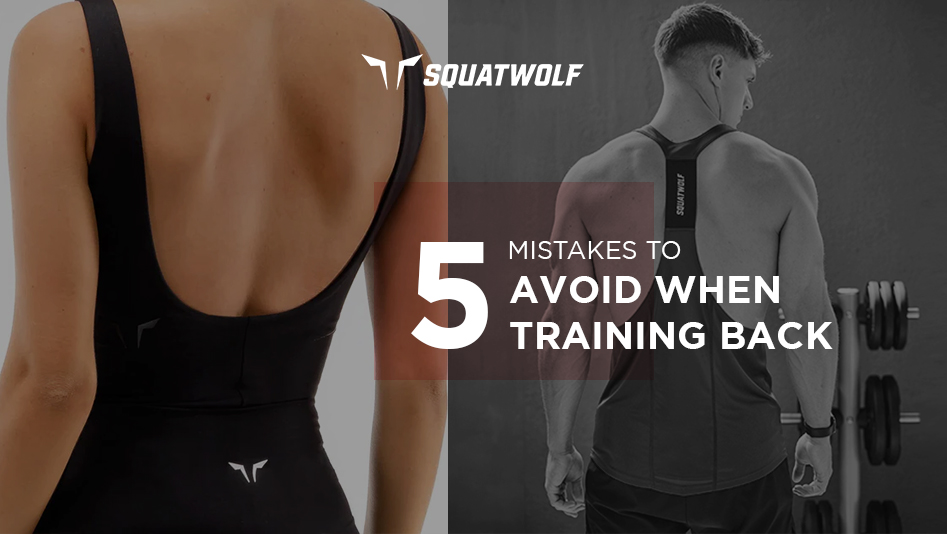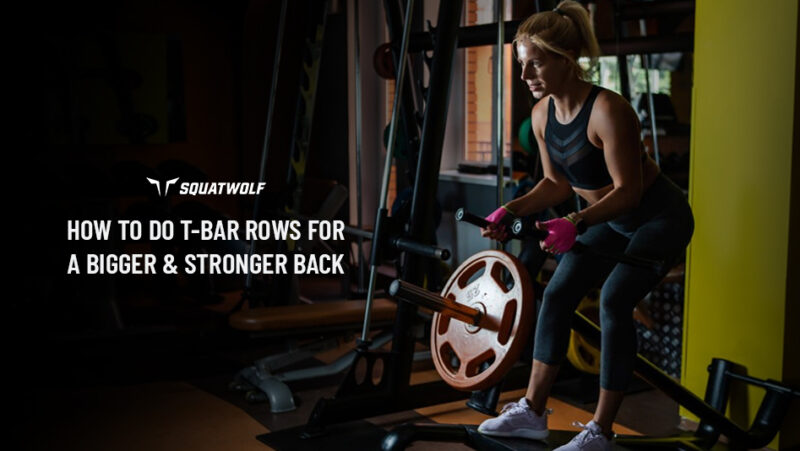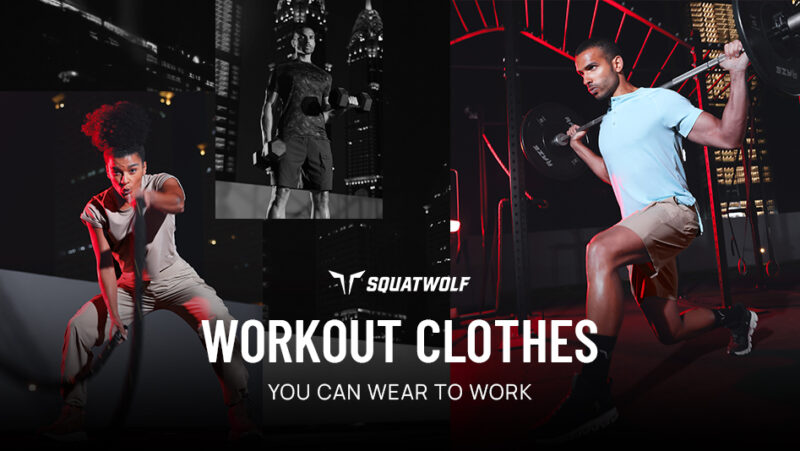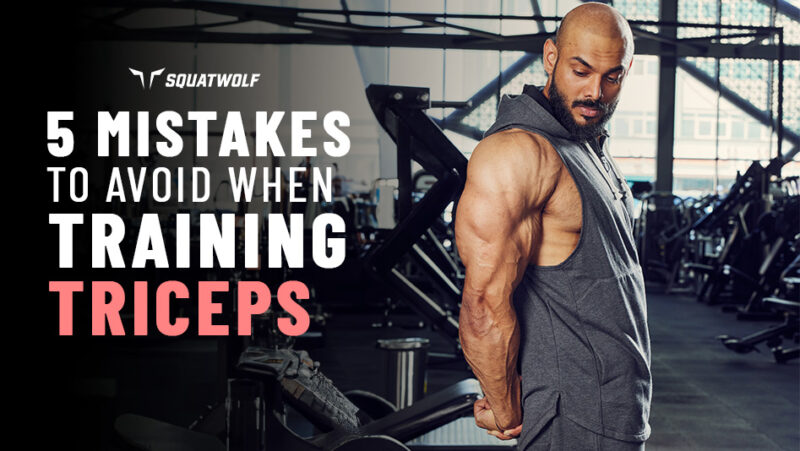Comes Tuesday again, the official ‘Pull Day’ at the gym. You’re all ready and set to max out your weights, be it rowing or pull-downs. But there’s that feeling that keeps you from going hard… the back pain after working out! No matter what you do, either you end up never feeling your muscles sore or you end up with lower back pain after workout – both a gym rat’s nightmare!
While training back is crucial for your overall fitness, posture improvement, structural stability, daily functionality and aesthetic physique, not everyone does it right.
In this guide, you’ll learn about the 5 common back workout mistakes that could not only lead to injuries but also harm your gains.
If you’re new to the gym, consider training with a split workout routine to get started.
Non-Neutral Spine | Overlooking Lower Back | Overtraining Upper Back | Ego Lifting & Limited ROM | Skipping Warm-ups & Muscle Activation | Back Exercises to Avoid | Key Takeaways | FAQs
1. Not Keeping a Neutral Spine During Pull-Ups & Chin-Ups

If there’s one way to build a stronger back with your bodyweight alone, it’s through pull-ups and chin-ups. From targeting your lats to your biceps, these bodyweight exercises are revered for giving you a bigger, stronger and wider back.
However, not keeping a neutral back during pull-ups and chin-ups can negatively impact your fitness and gains.
Injury Risk
Without a neutral or straight back during pull-ups and chin-ups, you’re likely to strain your back muscles and spinal ligaments. Whether you’re excessively extending your lower back outwards or overarching it, you’re going to end up with strain on your lower back muscles. This could also lead to injury in your spine, leading to disc dislocation in the worst-case scenario.
Impact On Gains
If your spine isn’t aligned in the right way, you’re not just risking injury, you’re also harming your gains. This is because your back muscles won’t be engaged. This is especially true because your upper back and lats won’t activate. As a result, the exercises will be ineffective in building the back you dream of.
Solution
Of course, there’s always a way to avoid this mistake. Make sure you:
- Engage your core during pull-ups and chin-ups
- Take the grip you’re comfortable with
- Control your eccentrics to prevent ‘swinging’
If you’re afraid of back injury from lifting, consider doing these 9 back exercises at home instead.
2. Overlooking Lower Back Training
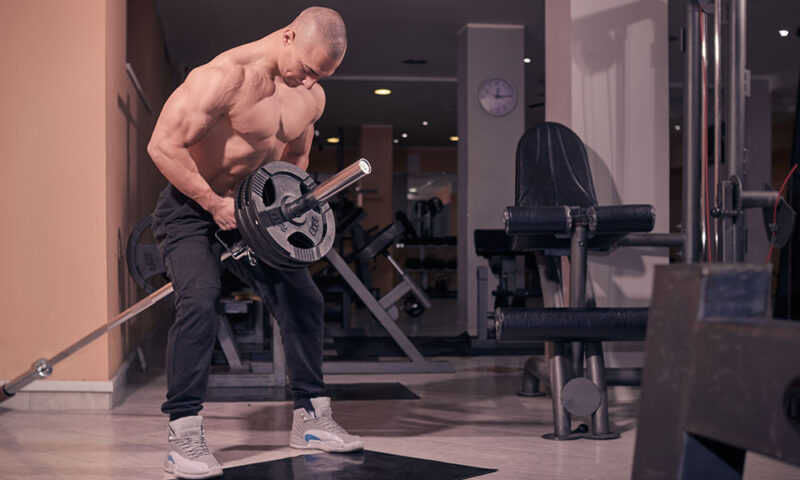
If you experience lower back pain after workout, it’s a sign you need to do something about it! Your lower back is the bridge between your upper body and lower body, giving you support in functional activities and daily mobility. If you have a weak lower back, you’re likely to struggle not only in the gym, but also in your regular routine – especially if you work a desk job.
Injury Risk
A lot of bodybuilders, powerlifters and regular gym buffs excessively focus on upper back training. They completely neglect lower back exercises, which leads to muscular imbalance. In addition, if you don’t train your lower back, you’re exerting a lot of stress on your lumbar spine, also known as your lower back tailbone. This leads to strains, sprains and even dislocations in your lower back.
Impact On Gains
A lower back that isn’t trained doesn’t just lead to risks of injuries. It also impacts your gains. This is because when you ignore lower back training, you’re creating a structure imbalance. Your upper back muscles will look shredded while your lower back will not be sculpted. More than that, your strength won’t increase either, which will impact your overall back gains.
Solution
Incorporate lower back exercises into your routine to build a stronger lower back. Make sure you:
- Add deadlifts, donkey kicks, hyperextensions and good morning to your workouts
- Do some functional training to build overall strength such as doing planks and pushups
- Activate your core before working out
Get a V-shaped back with these 4 lats workouts.
3. Overtraining Your Upper Back Muscles
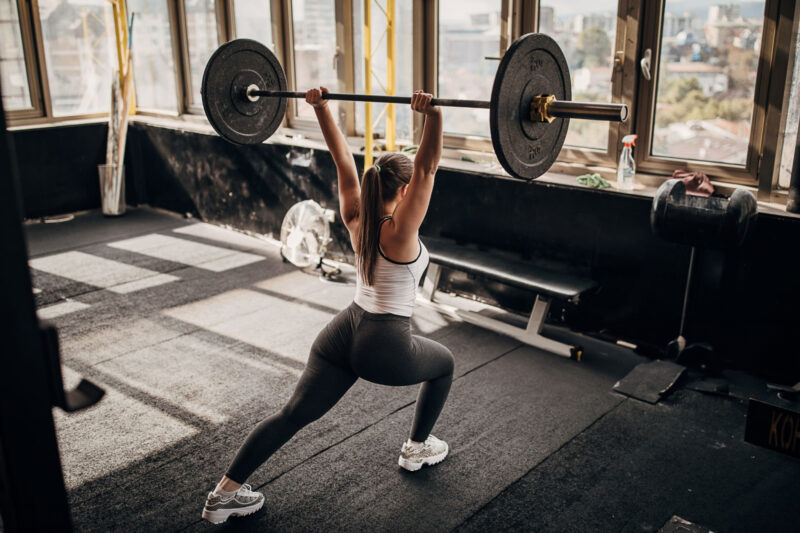
You don’t just need variety in your training routine to experience something different. You actually need it to create a balanced back workout routine that helps you develop equal muscle definition without the risks of injury. If you overtrain your upper back muscles or repetitively train the same muscles, you’re basically risking your entire physique.
Injury Risk
Whether it’s your upper back muscles or your lats, if you’re not switching up your workout routine every time you hit back days, you’re going to end up over training your muscles. Let’s say you’re constantly doing deadlifts, pull-downs or rowing without any variations. Essentially, it the same muscle trained every week. This overtraining actually leads to muscle overuse, causing stress and strain on your muscles. In fact, this is one of the main reasons why people experience a back injury from lifting.
Impact On Gains
If you’re training the same muscles every time, you’re on your way to muscular imbalance. This will also further weaken your unworked muscles, limiting your strength. If your goal is to build mass in your back, you won’t be able to achieve it.
Solution
Switch up your training routine when you’re working your back. Make sure you:
- Include dumbbell, barbell and even resistance band variations
- Change between your grip during bodyweight exercises such as a wide-grip, narrow grip and even neutral grip to target different parts of the back
- Rotate between your rowing exercises, doing bent, seated or single arm movements
If your goal is to get a wider and thicker back, consider back exercises for mass building.
4. Ego Lifting and Compromising Range of Motion
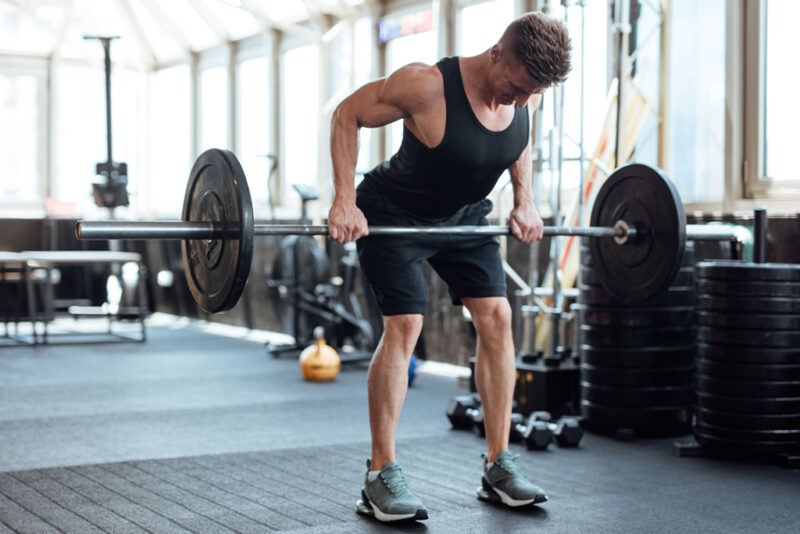
While it’s great to push yourself harder and progress in the gym, it’s important to avoid lifting weights you just cannot. In other words, you need not ego-lift. This is because when you’re lifting too heavy or heavier than you can, you’ll end up compromising your form and range of motion. This leads to poor muscle activation and worse – injuries.
Injury Risk
When the weights you lift are beyond your lifting capacity, you’ll be doing the exercise with horrible technique. You might be using secondary muscles excessively, your technique and form won’t be right or you might be overexerting your muscles. This leads to stress on your joints, rotators and muscles, causing strains, tears and dislocations. If your form is incorrect along with improper technique, you’re also at a risk of damaging your ligaments or tendons.
Impact On Gains
Without full range of motion, your muscles won’t fully extend or contract your muscles. This means your muscles won’t be fully stimulated during the movement, which compromises muscle growth. In addition, since your muscles won’t be engaged properly, you could also develop muscular imbalance.
Solution
Whether your goal is mass building or muscle definition, you need to make sure you’re not ego-lifting. Instead:
- Focus on your form to do your exercises properly
- Let your muscles fully stretch out and contract with each movement
- Record yourself or hire a personal trainer to keep your form in check
Minimize back pain with these upper back exercises.
5. Not Doing Warmups or Muscle Activation Work

One of the main reasons why people experience back pain after working out is because either they skip warm-ups or they don’t do flexibility training. In either case, their muscles are cold or stiff, making them prone to injuries.
Injury Risk
If you don’t do muscle activation work prior to lifting weights on back days, you won’t be able to do certain exercises such as deadlifts or rows properly. Without flexibility, your body won’t be mobile enough, which limits your range of motion and causes strain on your other muscles such as lower back, quads, glutes and hamstrings.
Impact On Gains
With flexibility and mobility training as part of your warmups, you’re getting blood pumping through your body and loosening your stiff muscles. This builds your mind-muscle connection before lifting. In addition, it prepares your back muscles for your lift, engaging and activating them more effectively during the lift. The more your back muscles are engaged, the better your muscle growth will be. In addition, without stretching and flexibility, your gains will be compromised. This is because your hip flexors will be too tight to allow a full range of motion. This will prevent you from maxing out your gains.
Solution
Prepare your whole body as well as your back muscles before your back workout. You should:
- Do some dynamic exercises such as jumping jacks, arm circles, back/torso rotations
- Stretch your major muscle groups such as your back, quads, glutes and hamstrings – this will loosen up the stiffness in your muscles
- Incorporate mobility drills into your routine such as hip circles and cat-crow stretches
Build a well-defined back with these 5 dumbbell back workouts.
10 Worst Back Exercises to Avoid on Your Back Days
While no exercise is inherently ‘bad’, there are a few exercises that could cause strain or stress in your muscles. Instead of leading you towards fitness, they’ll end up giving you an injury.
Here are a few exercises to avoid with back pain along with their safer alternatives:
| No. | Risky Exercise | Downside | Safer Alternative | Benefit of Alternative |
|---|---|---|---|---|
| 1 | Traditional Deadlift | Puts excessive strain on the lower back. | Trap Bar Deadlift | Reduces strain on the lower back, focuses more on legs. |
| 2 | Bent-Over Barbell Row | Can cause lower back strain if not done properly. | Seated Cable Row | Supports the back, reducing the risk of strain. |
| 3 | Leg Press | Can put pressure on the lower back when legs are pushed too far. | Step-Ups or Lunges | Lower risk of back strain, good for leg strength and stability. |
| 4 | Superman Exercise | Puts pressure on the lumbar spine and can aggravate pain. | Bird Dog | Strengthens back and core with less risk of lumbar strain. |
| 5 | Full Sit-Ups | Can strain the lower back and neck. | Partial Crunches | Targets the abs without straining the back or neck. |
| 6 | Heavy Squats | High compressive force on the spine. | Goblet Squats | Lower weight reduces spinal compression. |
| 7 | Upright Row | Can cause shoulder and neck strain. | Dumbbell Lateral Raises | Reduces risk of shoulder impingement, focuses on shoulder muscles. |
| 8 | Good Mornings | High risk of lower back strain. | Glute Bridges | Strengthens lower back and glutes with minimal spinal strain. |
| 9 | Behind-the-Neck Lat Pulldowns | Can strain the neck and shoulders. | Front Lat Pulldowns | Safer for shoulders and neck, effective for lats. |
| 10 | Loaded Back Extensions | Can aggravate lower back pain with improper form. | Pelvic Tilts | Strengthens lower back muscles gently, reduces risk of strain. |
*Pro Tip: Make sure you’ve got the right gym wear when hitting your back days – this will help you experience a full range of motion while hitting all the right muscles!
Key Takeaways
It’s important to know that nailing your back workouts isn’t about going hard on the weights or training like you’re in Karate Kid. It’s about using your mind-muscle connection at its best. You don’t have to lift more than your capacity – you simply need to focus on full range of motion, allowing your muscles to contract with each pull, each lift. With the right form and clever training, you’ll be able to build a back that gets heads turning and people swooning!
FAQs
While you should always give time for rest and recovery, you can train your back up to 3 times a week, with a 24 hour resting and recovery time in between. This will allow your muscles to recover and grow effectively. However, if you lift heavy weights to the extend where you can only complete 6-8 reps per set, then you should at least give 48 hours of resting and recovery time between your back days. If you’re following the split workout routine, then you can have between 1-2 pull days a week, which includes training your back.
Yes and no. It really depends on what area of your back is hurting and whether doing the exercise is hurting your back or relieving it. For instance, a lot of people experience lower back pain during deadlifts. If the pain is soreness, then you should keep going. But if it feels like a pull, you should avoid it as it could cause dislocations. In addition, you should be doing flexibility and mobility training if your back hurts. You should incorporate neck, back, lower back and lower body stretches to loosen up your stiff muscles. Many health experts recommend doing exercises that alleviate back pain. However, if a particular exercise is causing your back pain, then you should obviously avoid it.
Learn more about how to fix rhomboid pain.
If you have back pain, then some of the worst exercises for you could be traditional deadlifts, leg press, bent over rows (with barbell), heavy weight squats, supermans, upright rows, behind-the-neck lat pull downs, good mornings and weighted hyper extensions. These exercises could over-exert your back muscles. They’re also tricky to execute so if you’re not careful about your form, you could end up with an injury.
There are several reasons why you might experience back pain after working out such as lifting weights that are too heavy, not executing the right technique, not experiencing a full range of motion during your eccentrics, not contracting the right muscles, poor form and even overtraining certain muscle groups. Make sure you do some cool down exercises after your workout to allow recovery and pain relief.

